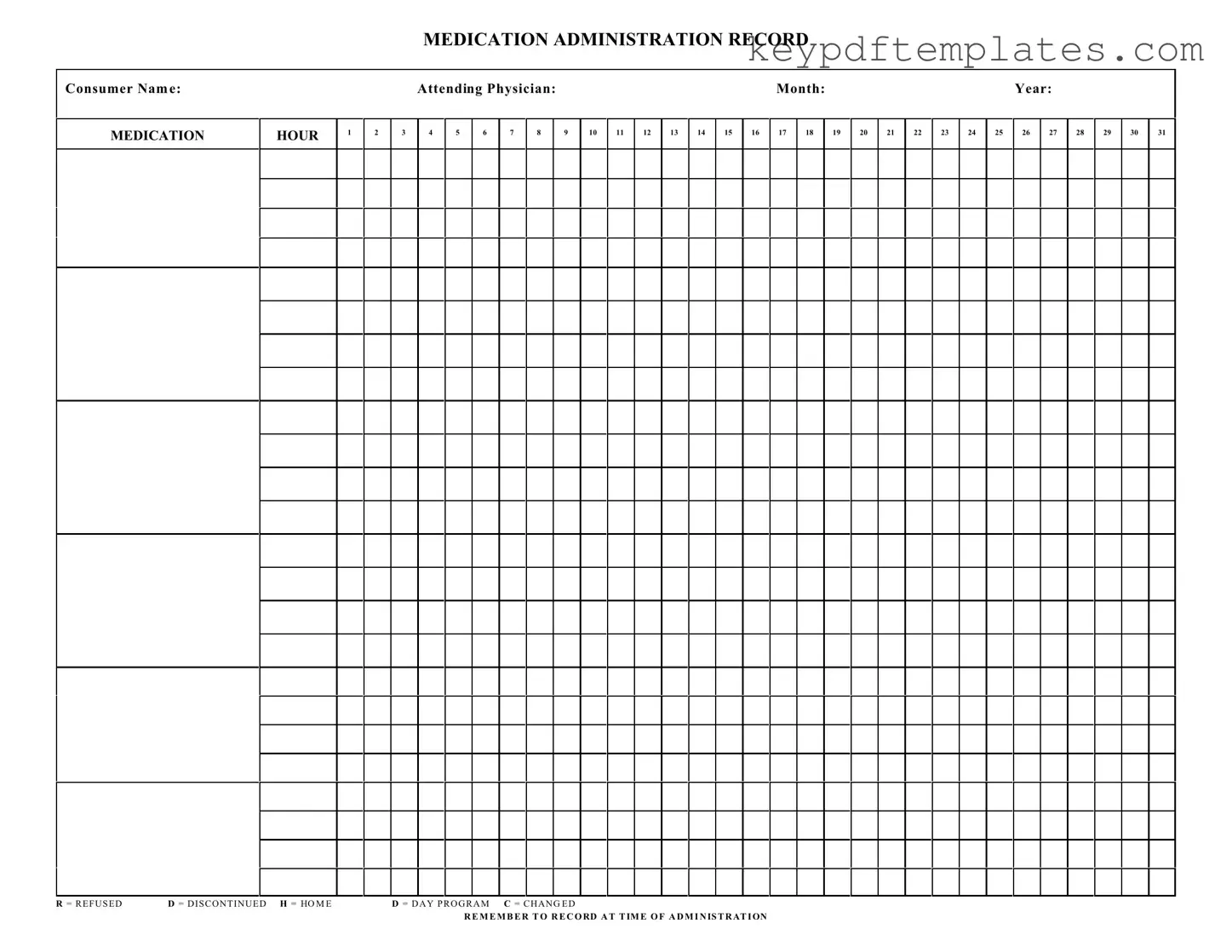Get Medication Administration Record Sheet Form
The Medication Administration Record Sheet is a vital document used to track the administration of medications to consumers. This form includes essential details such as the consumer's name, attending physician, and medication schedule for each hour of the day. Accurate completion of this record ensures proper medication management and promotes the well-being of individuals receiving care.
Modify Document Online
